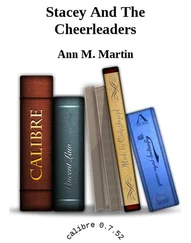Ann Martin - Claudia And the Clue in the Photograph
Здесь есть возможность читать онлайн «Ann Martin - Claudia And the Clue in the Photograph» весь текст электронной книги совершенно бесплатно (целиком полную версию без сокращений). В некоторых случаях можно слушать аудио, скачать через торрент в формате fb2 и присутствует краткое содержание. Жанр: Старинная литература, на английском языке. Описание произведения, (предисловие) а так же отзывы посетителей доступны на портале библиотеки ЛибКат.
- Название:Claudia And the Clue in the Photograph
- Автор:
- Жанр:
- Год:неизвестен
- ISBN:нет данных
- Рейтинг книги:3 / 5. Голосов: 1
-
Избранное:Добавить в избранное
- Отзывы:
-
Ваша оценка:
- 60
- 1
- 2
- 3
- 4
- 5
Claudia And the Clue in the Photograph: краткое содержание, описание и аннотация
Предлагаем к чтению аннотацию, описание, краткое содержание или предисловие (зависит от того, что написал сам автор книги «Claudia And the Clue in the Photograph»). Если вы не нашли необходимую информацию о книге — напишите в комментариях, мы постараемся отыскать её.
Claudia And the Clue in the Photograph — читать онлайн бесплатно полную книгу (весь текст) целиком
Ниже представлен текст книги, разбитый по страницам. Система сохранения места последней прочитанной страницы, позволяет с удобством читать онлайн бесплатно книгу «Claudia And the Clue in the Photograph», без необходимости каждый раз заново искать на чём Вы остановились. Поставьте закладку, и сможете в любой момент перейти на страницу, на которой закончили чтение.
Интервал:
Закладка:
home and get them right this second,” she said.
"Great!" I said. "And I'll develop them the minute you get back. Or, on second thought,” I added, thinking of the stranger on the other side of my bathroom door, "maybe I'll wait till my parents come home."
Chapter 10.
Of course, by the time Mary Anne got back with the film, my parents were home from work, and so was Janine. Mary Anne handed me the film and said she couldn't stay because her dad and Sharon wanted her home for dinner. "But I'm dying to know what you find out," she said. "Call me!"
I was on my way upstairs, thinking I'd head straight for the darkroom, when my mom called from the kitchen. "Claudia, time for dinner," she said.
"Oh, Mom," I said, walking into the kitchen. "I'm really not hungry, and I have some work to do in the darkroom. Can't I skip dinner, just this once?"
She shook her head. "You know how I feel about that," she said. "Dinnertime is just about the only time our family is all together. I'd like you to sit down with us so we can all talk."
"Okay," I said. "Want me to set the table?" I was hoping I could at least hurry dinnertime along, if I had to be there for it. I grabbed the plates, napkins, and silverware and threw them down on the dining room table, setting it in record time. Then I headed back into the kitchen and helped my mom put together a salad to go with the chili my dad had made.
Finally, after what seemed like hours, we were all sitting down at the table. As usual, my parents asked Janine and me how our days had gone. "Fine," I said, trying to keep it short.
"I had a wonderful day," said Janine. "I worked at the lab straight through lunch, and Professor Woodley said my research techniques were excellent." I thought she gave me a strange look when she said she'd worked straight through lunch, but I ignored it. I had a feeling I knew what she was thinking: that I was a real lightweight because I sometimes complained about having to go to school until noon every day during the summer. Well, I didn't care what she thought. If she wanted to be a workaholic, that was fine with me. As long as she didn't expect me to be the same way.
I bolted my chili, plowed through a small plate of salad, and asked to be excused.
"No dessert?" my dad asked, pretending to be in shock.
"It’s blueberry pie," said my mom, trying to tempt me.
"I'll have some later," I said. "Right now I need to develop some film. By the way, Janine, that reminds me. I still haven't made a sign for the darkroom, so could you please just knock before you open the door?"
"Of course," she said. "Destroying your film once was enough. I'll take every precaution to avoid repeating the error."
"Uh, right," I said. "Thanks." Sometimes I wonder about Janine. She's smart, no doubt about it. But will she ever learn to talk like a normal person? I jumped up from the table, took my plate into the kitchen and rinsed it, and headed upstairs.
For the second time in one day, I went through my film-developing routine. I brought my radio into the darkroom, and I stuck the towel under the door. I-set up my chemicals and equipment, and this time I checked everything twice to make sure the tank would be where I could find it. Then I switched out the lights and began to load Mary Anne's film onto a reel.
About ten minutes later, I switched the lights back on and gazed happily at the dosed
tank sitting on the counter. Mission accomplished. Now all I had to do was develop the film. That routine is second nature to me by now, and I went through it easily, singing along to the radio as I worked.
Without going into too much detail, here's how film developing works: The tank, which doesn't let any light in, has a small hole in the center of the lid. That hole leads to a little tube that goes down into the tank, so you can pour chemicals in and out without any light getting in. So. First, you pour developer into the tank, and start the timer. You tap the tank a couple of times to get rid of air bubbles. While the film is developing, you have to "agitate" the tank (that means move it around) every so often. Then, when the timer rings, you pour out the developer and right away you put in this stuff called stop bath, which (dun) stops the developing. You agitate that for a little while — only about thirty seconds — and pour it out. Then you pour in the fixer, which makes the images on the negative permanent, and helps to harden the negative. The fixer stays in for about five minutes, and you agitate the tank once in a while. And finally, you pour out the fixer and, while the film is still in the tank, rinse the film (my dad helped me attach a little hose to the water faucet). -Once that’s
done, you put in a wetting agent to help keep water spots off the film. Then you take the film out of the tank and hang it up to dry. That's all there is to it!
As soon as I pulled the film out of the tank I could see that Mary Anne's pictures had come out very well. The images were dear and the contrast (the difference between blacks and whites) was good. But before I could make a contact sheet and take a closer look, I had to wait for the negatives to dry.
I cleaned up my equipment and put everything away, still singing along to the radio. Then I unplugged the radio and brought it back into my room, so I could listen to it while I did my math homework. I sat down at my desk, pulled out my negative file, and took a longing glance at the contact sheet of my portrait series. I still wanted to work on that project, but it would have to wait. When I'm involved in a mystery, it’s hard for me to think about anything else until the mystery is solved.
A few hours later — long after my mom had stopped in to tell me it was time for bed — I snuck back into the darkroom and checked to see if the film was dry. It was, so I made a contact print as quickly and as quietly as I could. Then I went straight to bed. I was totally exhausted, and I knew there was no point in looking over Mary Anne's pictures until I'd had a good night’s sleep.
I woke up early the next morning and sat right down at my desk with the contact print and my loupe. Here's what I saw: first there were a whole bunch of shots of Buddy, Suzi, Charlotte, and Becca fooling around. There were also a few pictures of the kids taking pictures. With a red grease pencil, I circled some of the best shots, thinking they'd look great in Dawn's album.
Then, finally, I found what I had been looking for. The pictures of me taking pictures of the bank. Mary Anne must have thought I looked pretty funny, because she took quite a few pictures: me, squatting to frame a low shot; me, squinting as I focused; me, turning the camera practically upside-down to snap a shot of the carvings next to one of the pillars. But guess what? None of the shots showed anything suspicious at all. Mr. Zibreski was in a couple of them, but he wasn't doing anything different from what he'd been doing in the other pictures. Same for the lady with the baby carriage.
I put down my loupe and sighed. No new dues. Not one.
"Claudia!" called my mother from downstairs. "Time to get going!"
"Coming!" I called. But I couldn't resist. I picked up the loupe and took one more look. Then I saw something. Something important. In three of the pictures, where I was standing
alone in front of the bank, there were windows behind me. And one of the windows looked different from the others. I squinted and screwed my eye into the loupe for a better look. It was unmistakable! One of the windows was lit up.
I sat back and thought. Why would one of the rooms in the bank be lit up — on a Sunday, when the bank was dosed? Of course, it was possible that somebody had left the light on accidentally. But it seemed much more likely to me that somebody had been inside the bank at the time those pictures were taken. Somebody who was involved in the bank robbery.
Читать дальшеИнтервал:
Закладка:
Похожие книги на «Claudia And the Clue in the Photograph»
Представляем Вашему вниманию похожие книги на «Claudia And the Clue in the Photograph» списком для выбора. Мы отобрали схожую по названию и смыслу литературу в надежде предоставить читателям больше вариантов отыскать новые, интересные, ещё непрочитанные произведения.
Обсуждение, отзывы о книге «Claudia And the Clue in the Photograph» и просто собственные мнения читателей. Оставьте ваши комментарии, напишите, что Вы думаете о произведении, его смысле или главных героях. Укажите что конкретно понравилось, а что нет, и почему Вы так считаете.
